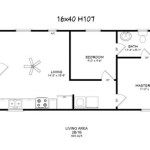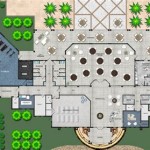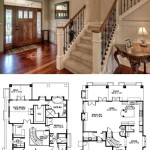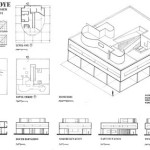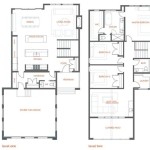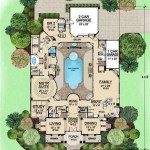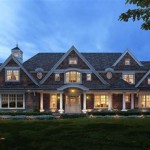Ghanaian House Floor Plans: Essential Aspects
Ghanaian house floor plans are blueprints that outline the layout and design of a house, providing a comprehensive visual representation of the interior space. These plans are essential for comprehending the functionality, aesthetics, and overall structure of a house before construction begins. Understanding the key aspects of Ghanaian house floor plans is crucial for homeowners, architects, and construction professionals alike.
1. Space Planning and Room Layout
Ghanaian house floor plans prioritize efficient space planning and well-defined room layouts. They typically feature a central living area that connects to other rooms, such as bedrooms, bathrooms, and kitchens. The size and arrangement of rooms depend on the needs and preferences of the homeowner, but plans often incorporate open-concept designs that foster a sense of spaciousness and flow.
2. Cultural Influences
Ghanaian house floor plans reflect the cultural traditions and values of the country. Open-air courtyards or patios are common, providing a space for socializing, relaxation, and traditional outdoor cooking. Additionally, cultural influences may dictate the placement of specific rooms, such as shrines or family gathering areas.
3. Natural Ventilation and Lighting
Ghana's tropical climate demands thoughtful consideration of natural ventilation and lighting. House floor plans often incorporate large windows and doors to maximize airflow and allow natural light to penetrate the interior. Cross-ventilation is also a key design principle, ensuring the circulation of fresh air throughout the house.
4. Kitchen and Bathroom Design
Kitchens and bathrooms are essential areas in any house, and Ghanaian floor plans allocate ample space for these facilities. Kitchens typically feature a central cooking area with ample storage and counter space. Bathrooms incorporate both private and shared spaces, with showers, toilets, and washbasins as common fixtures.
5. Building Materials and Construction Techniques
Ghanaian house floor plans must adhere to local building codes and regulations. The choice of building materials and construction techniques varies depending on region, availability, and budget. Common materials include concrete blocks, bricks, and wood, while construction techniques range from traditional mud-brick structures to modern concrete frame buildings.
6. Sustainability Considerations
Increasingly, Ghanaian house floor plans incorporate sustainability principles. Plans may feature energy-efficient appliances, solar panels, and rainwater harvesting systems. Green building practices aim to reduce environmental impact and promote a healthier living environment.
Conclusion
Ghanaian house floor plans are meticulously designed to meet the unique functional, cultural, and climatic requirements of the country. Understanding the essential aspects of these plans is paramount for creating homes that are not only aesthetically pleasing but also comfortable, practical, and culturally resonant. By incorporating these key considerations into the planning process, architects and homeowners can ensure the creation of spaces that enhance the well-being of occupants and reflect the rich traditions of Ghanaian architecture.

Ghana Dypsis House Floor Plans

Ghana Latania Luxury House Floor Plans

House Plans Ghana 3 4 5 6 Bedroom In Three Plan

V 345 Ghana Luxury Two Y Tiny Home Plan With Flat Terrace Roof 4 Bed Bath Ibest Ing Modern Simple House Design Deck

Floor Plan Of A Single Banked Compound House Scientific Diagram

Home Design Plans By The Best Ghana Architects House Floor
Floor Plan Of A Double Banked Compound House Scientific Diagram

Ghana House Plans Architects

Designing A 100 Year Home In Accra Emmanuel Quartey

For 4 Bedroom Townhouse Tema Accra Beds Baths Ghana Property Centre Ref 4146


